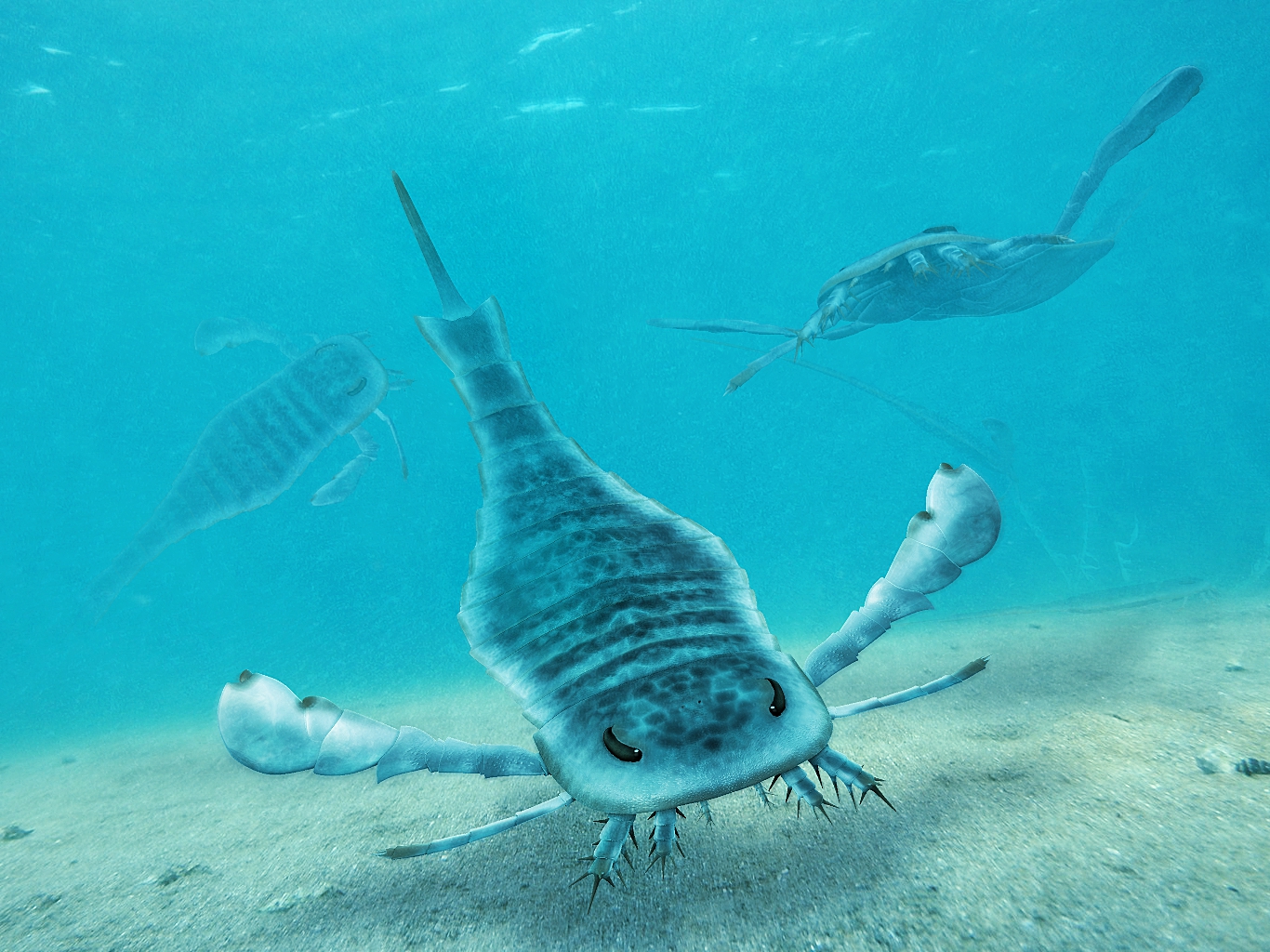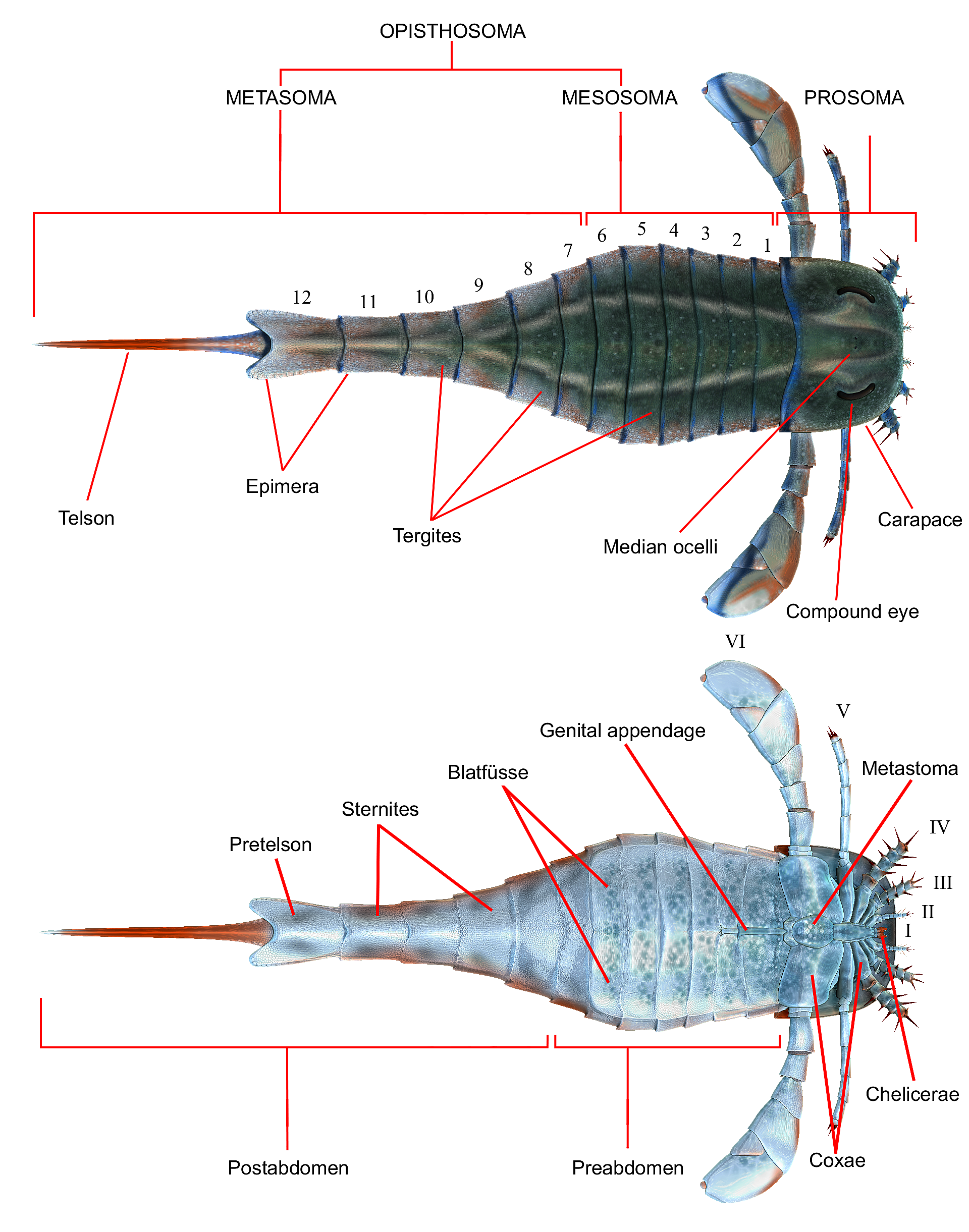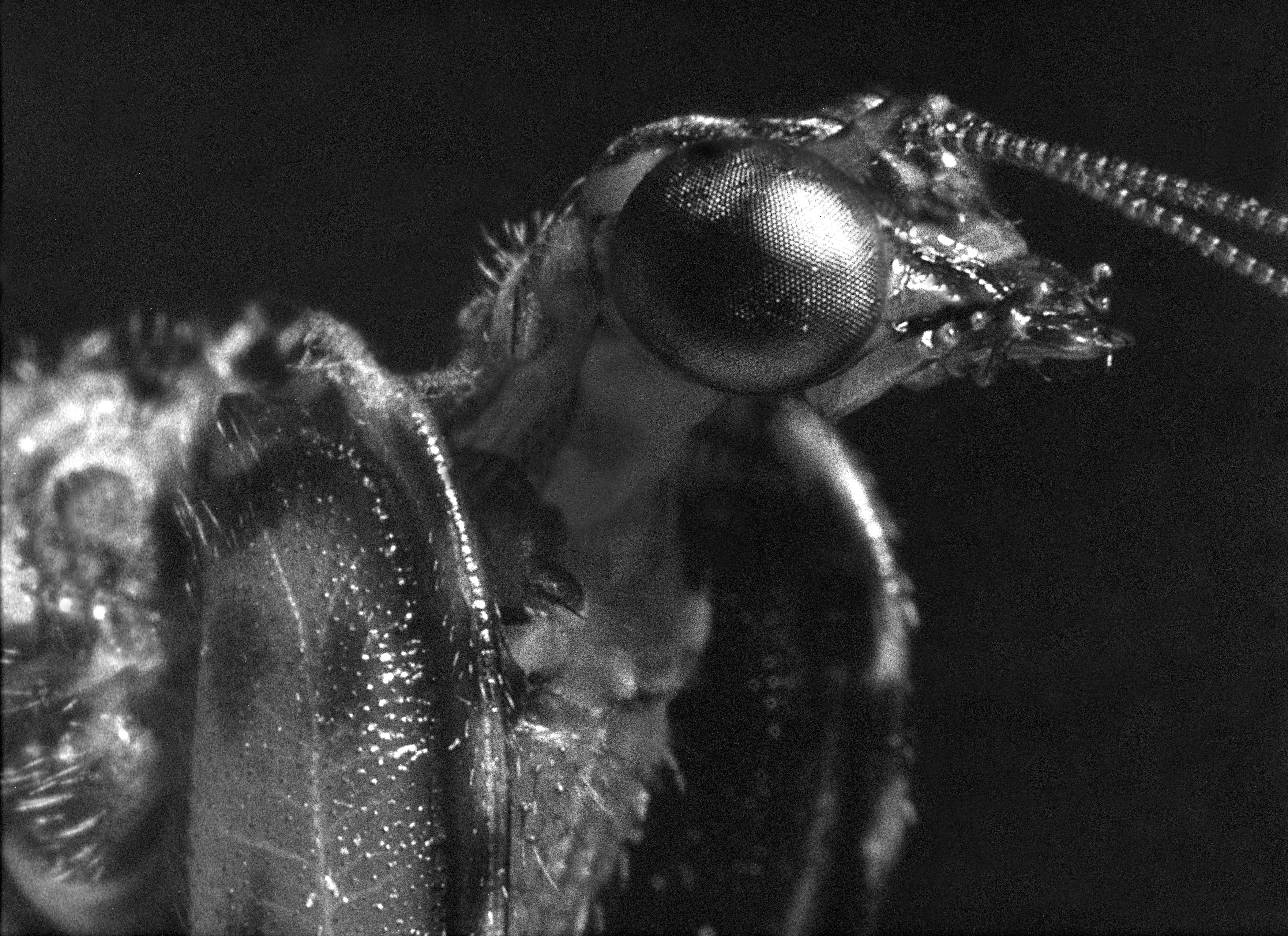|
Stylonurus
''Stylonurus'' is a genus of prehistoric eurypterid of the family Stylonuridae. The genus contains three species: ''Stylonurus powriensis'' from the Devonian of Scotland, ''Stylonurus shaffneri'' from the Devonian of Pennsylvania and ''Stylonurus perspicillum'' from the Devonian of Germany.Dunlop, J. A., Penney, D. & Jekel, D. 2015. A summary list of fossil spiders and their relatives. In World Spider Catalog. Natural History Museum Bern, online at http://wsc.nmbe.ch , version 16.0 http://www.wsc.nmbe.ch/resources/fossils/Fossils16.0.pdf (PDF). The assignment of ''S. perspicillum'' and ''S. schaffneri'' to the genus is doubtful. A previously assigned species, ''S. ensiformis'', is today regarded as synonymous with ''S. powriensis''. Description Stylonurids, which lived from the Ordovician to Lower Permian periods, were small to very large forms with scales developing into tubercles and knobs. The prosoma (head) exhibited variable shape, with arcuate compound eyes located subce ... [...More Info...] [...Related Items...] OR: [Wikipedia] [Google] [Baidu] [Amazon] |
|
|
Stylonuroidea
Stylonuroidea is an extinct superfamily of eurypterids, an extinct group of chelicerate arthropods commonly known as "sea scorpions". It is one of four superfamilies classified as part of the suborder Stylonurina. Stylonuroidea, which lived from the Early Silurian to the Late Devonian, were characterized by their last pair of prosomal (head) appendages, which were developed as walking legs, or less commonly developed as swimming legs with paddles formed by the expansion of the two or three penultimate joints. 1955. Merostomata. ''Treatise on Invertebrate Paleontology, Part P Arthropoda 2, Chelicerata'', P36. as Stylonuracea Description Stylonuroids are designated as Stylonurina, stylonurines with flattened or truncated posterior metastomata margins. Of the four stylonurine superfamilies, the Stylonuroidea is the most poorly known. Whilst the topology of most stylonurine clades fit well with the stratigraphic record, Stylonuroidea is an exception in that the earliest record of t ... [...More Info...] [...Related Items...] OR: [Wikipedia] [Google] [Baidu] [Amazon] |
|
|
Stylonuridae
Stylonuridae is a family of eurypterids, an extinct group of chelicerate arthropods commonly known as "sea scorpions". The family is one of two families contained in the superfamily Stylonuroidea (along with Parastylonuridae), which in turn is one of four superfamilies classified as part of the suborder Stylonurina. Stylonuridae, which lived from Early Silurian to the Late Devonian, were small to very large forms with scales developing into tubercules and knobs. The prosoma (head) exhibited variable shape, with arcuate compound eyes located subcentrally, or anteriorly. Their abdomens were slender. Their walking legs were long and powerful, sometimes characterized by spines. Most genera did not have swimming legs. 1955. Merostomata. ''Treatise on Invertebrate Paleontology, Part P Arthropoda 2, Chelicerata'', P: 36. Description Stylonurids are stylonuroids with undifferentiated opisthosoma with appendages II-IV being spiniferous akin to the genus '' Ctenopterus'', whilst appendag ... [...More Info...] [...Related Items...] OR: [Wikipedia] [Google] [Baidu] [Amazon] |
|
 |
List Of Eurypterids
This list of eurypterid genera is a comprehensive listing of all Genus, genera that have ever been included in the order Eurypterida, excluding purely vernacular terms. The list includes all commonly accepted genera, but also genera that are now considered invalid, doubtful (''nomen dubium''), or were not formally published (''nomen nudum''), as well as Synonym (zoology), junior synonyms of more established names and genera that are no longer considered eurypterids. The list currently includes 115 names out of which 74 are considered valid eurypterid genera. There are approximately 250 species of eurypterids recognized as valid. Naming conventions and terminology There is no "official" or "canonical" list of eurypterid genera. The closest thing is found contained in the regularly updated ''Summary list'' ''of fossil spiders and their relatives'' in the World Spider Catalog. The vast majority of the content of the list below, including the valid genera, preoccupied names, junior ... [...More Info...] [...Related Items...] OR: [Wikipedia] [Google] [Baidu] [Amazon] |
 |
Eurypterids Of Europe
Eurypterids, often informally called sea scorpions, are a group of extinct marine arthropods that form the order Eurypterida. The earliest known eurypterids date to the Darriwilian stage of the Ordovician period, 467.3 million years ago. The group is likely to have appeared first either during the Early Ordovician or Late Cambrian period. With approximately 250 species, the Eurypterida is the most diverse Paleozoic chelicerate order. Following their appearance during the Ordovician, eurypterids became major components of marine faunas during the Silurian, from which the majority of eurypterid species have been described. The Silurian genus ''Eurypterus'' accounts for more than 90% of all known eurypterid specimens. Though the group continued to diversify during the subsequent Devonian period, the eurypterids were heavily affected by the Late Devonian extinction event. They declined in numbers and diversity until becoming extinct during the Permian–Triassic extinction event (or ... [...More Info...] [...Related Items...] OR: [Wikipedia] [Google] [Baidu] [Amazon] |
|
Eurypterid
Eurypterids, often informally called sea scorpions, are a group of extinct marine arthropods that form the Order (biology), order Eurypterida. The earliest known eurypterids date to the Darriwilian stage of the Ordovician period, 467.3 Myr, million years ago. The group is likely to have appeared first either during the Early Ordovician or Late Cambrian period. With approximately 250 species, the Eurypterida is the most diverse Paleozoic Chelicerata, chelicerate order. Following their appearance during the Ordovician, eurypterids became major components of marine faunas during the Silurian, from which the majority of eurypterid species have been described. The Silurian genus ''Eurypterus'' accounts for more than 90% of all known eurypterid specimens. Though the group continued to diversify during the subsequent Devonian period, the eurypterids were heavily affected by the Late Devonian extinction event. They declined in numbers and diversity until becoming extinct during the Permi ... [...More Info...] [...Related Items...] OR: [Wikipedia] [Google] [Baidu] [Amazon] |
|
 |
Fossil Taxa Described In 1856
A fossil (from Classical Latin , ) is any preserved remains, impression, or trace of any once-living thing from a past geological age. Examples include bones, shells, exoskeletons, stone imprints of animals or microbes, objects preserved in amber, hair, petrified wood and DNA remnants. The totality of fossils is known as the ''fossil record''. Though the fossil record is incomplete, numerous studies have demonstrated that there is enough information available to give a good understanding of the pattern of diversification of life on Earth. In addition, the record can predict and fill gaps such as the discovery of ''Tiktaalik'' in the arctic of Canada. Paleontology includes the study of fossils: their age, method of formation, and evolutionary significance. Specimens are sometimes considered to be fossils if they are over 10,000 years old. The oldest fossils are around 3.48 billion years to 4.1 billion years old. Early edition, published online before print. The ob ... [...More Info...] [...Related Items...] OR: [Wikipedia] [Google] [Baidu] [Amazon] |
 |
Prehistoric Life Of Europe
Prehistory, also called pre-literary history, is the period of human history between the first known use of stone tools by hominins million years ago and the beginning of recorded history with the invention of writing systems. The use of symbols, marks, and images appears very early among humans, but the earliest known writing systems appeared years ago. It took thousands of years for writing systems to be widely adopted, with writing having spread to almost all cultures by the 19th century. The end of prehistory therefore came at different times in different places, and the term is less often used in discussing societies where prehistory ended relatively recently. It is based on an old conception of history that without written records there could be no history. The most common conception today is that history is based on evidence, however the concept of prehistory hasn't been completely discarded. In the early Bronze Age, Sumer in Mesopotamia, the Indus Valley Civilis ... [...More Info...] [...Related Items...] OR: [Wikipedia] [Google] [Baidu] [Amazon] |
|
Devonian Eurypterids
The Devonian ( ) is a geologic period and system of the Paleozoic era during the Phanerozoic eon, spanning 60.3 million years from the end of the preceding Silurian period at million years ago ( Ma), to the beginning of the succeeding Carboniferous period at Ma. It is the fourth period of both the Paleozoic and the Phanerozoic. It is named after Devon, South West England, where rocks from this period were first studied. The first significant evolutionary radiation of life on land occurred during the Devonian, as free- sporing land plants (pteridophytes) began to spread across dry land, forming extensive coal forests which covered the continents. By the middle of the Devonian, several groups of vascular plants had evolved leaves and true roots, and by the end of the period the first seed-bearing plants ( pteridospermatophytes) appeared. This rapid evolution and colonization process, which had begun during the Silurian, is known as the Silurian-Devonian Terrestrial Revolu ... [...More Info...] [...Related Items...] OR: [Wikipedia] [Google] [Baidu] [Amazon] |
|
 |
Telson
The telson () is the hindmost division of the body of an arthropod. Depending on the definition, the telson is either considered to be the final segment (biology), segment of the arthropod body, or an additional division that is not a true segment on account of not arising in the embryo from teloblast areas as other segments. It never carries any appendages, but a forked "tail" called the caudal furca may be present. The shape and composition of the telson differs between arthropod groups. Crustaceans In lobsters, Caridea, shrimp and other Decapoda, decapods, the telson, along with the uropods, forms the tail fan. This is used as a paddle in the caridoid escape reaction ("lobstering"), whereby an alarmed animal rapidly flexes its tail, causing it to dart backwards. Krill can reach speeds of over 60 cm per second by this means. The Induction period, trigger time to optical stimulus (physiology), stimulus is, in spite of the low temperatures, only 55 milliseconds. In th ... [...More Info...] [...Related Items...] OR: [Wikipedia] [Google] [Baidu] [Amazon] |
 |
Abdomen
The abdomen (colloquially called the gut, belly, tummy, midriff, tucky, or stomach) is the front part of the torso between the thorax (chest) and pelvis in humans and in other vertebrates. The area occupied by the abdomen is called the abdominal cavity. In arthropods, it is the posterior (anatomy), posterior tagma (biology), tagma of the body; it follows the thorax or cephalothorax. In humans, the abdomen stretches from the thorax at the thoracic diaphragm to the pelvis at the pelvic brim. The pelvic brim stretches from the lumbosacral joint (the intervertebral disc between Lumbar vertebrae, L5 and Vertebra#Sacrum, S1) to the pubic symphysis and is the edge of the pelvic inlet. The space above this inlet and under the thoracic diaphragm is termed the abdominal cavity. The boundary of the abdominal cavity is the abdominal wall in the front and the peritoneal surface at the rear. In vertebrates, the abdomen is a large body cavity enclosed by the abdominal muscles, at the front an ... [...More Info...] [...Related Items...] OR: [Wikipedia] [Google] [Baidu] [Amazon] |
 |
Genus
Genus (; : genera ) is a taxonomic rank above species and below family (taxonomy), family as used in the biological classification of extant taxon, living and fossil organisms as well as Virus classification#ICTV classification, viruses. In binomial nomenclature, the genus name forms the first part of the binomial species name for each species within the genus. :E.g. ''Panthera leo'' (lion) and ''Panthera onca'' (jaguar) are two species within the genus ''Panthera''. ''Panthera'' is a genus within the family Felidae. The composition of a genus is determined by taxonomy (biology), taxonomists. The standards for genus classification are not strictly codified, so different authorities often produce different classifications for genera. There are some general practices used, however, including the idea that a newly defined genus should fulfill these three criteria to be descriptively useful: # monophyly – all descendants of an ancestral taxon are grouped together (i.e. Phylogeneti ... [...More Info...] [...Related Items...] OR: [Wikipedia] [Google] [Baidu] [Amazon] |
 |
Compound Eye
A compound eye is a Eye, visual organ found in arthropods such as insects and crustaceans. It may consist of thousands of ommatidium, ommatidia, which are tiny independent photoreception units that consist of a cornea, lens (anatomy), lens, and photoreceptor cells which distinguish brightness and color. The image perceived by this arthropod eye is a combination of inputs from the numerous ommatidia, which are oriented to point in slightly different directions. Compared with single-aperture eyes, compound eyes have poor image resolution; however, they possess a very large view angle and the ability to detect fast movement and, in some cases, the Polarization (waves), polarization of light. Because a compound eye is made up of a collection of ommatidia, each with its own lens, light will enter each ommatidium instead of using a single entrance point. The individual light receptors behind each lens are then turned on and off due to a series of changes in the light intensity during mov ... [...More Info...] [...Related Items...] OR: [Wikipedia] [Google] [Baidu] [Amazon] |